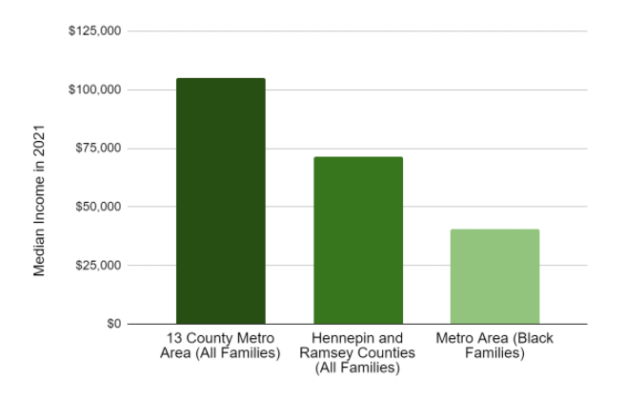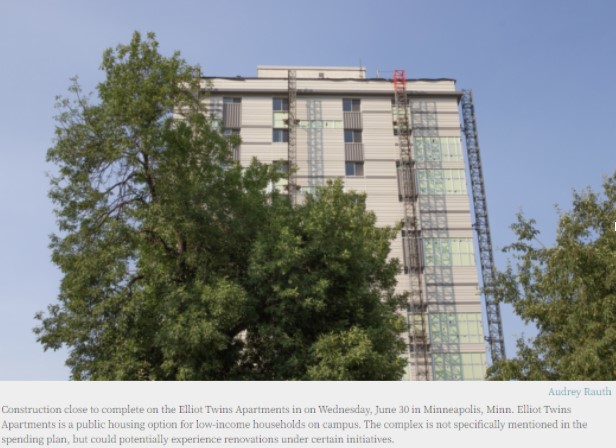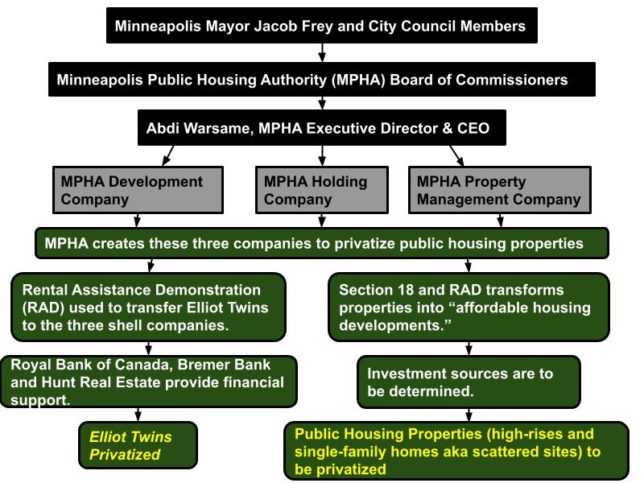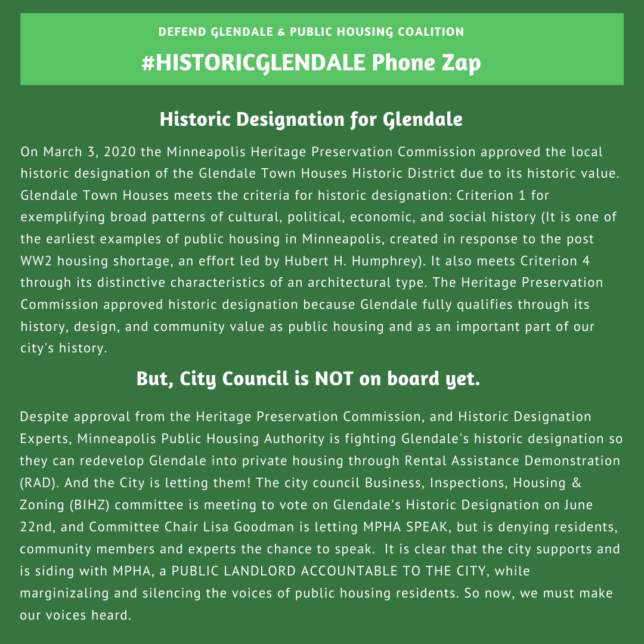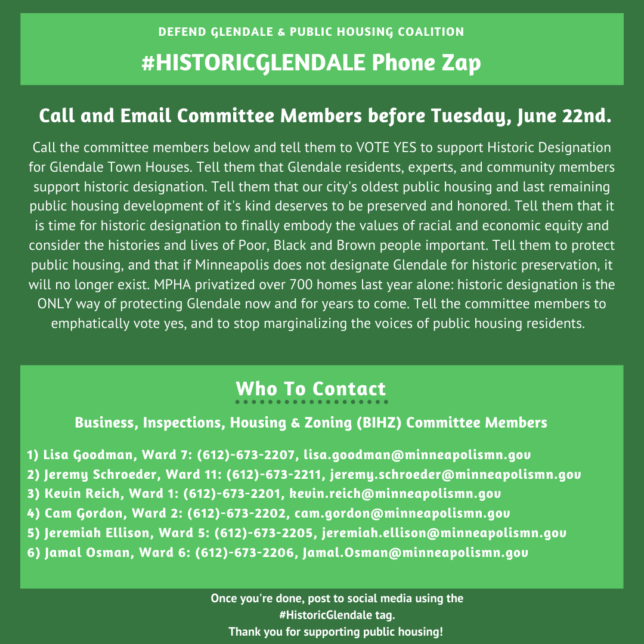For all of his talk about deeply affordable housing on the campaign trail, Jacob Frey barely mentioned the most affordable type of housing – public housing – in his plan to spend American Rescue Plan stimulus money. However, one of the few times Frey mentions the Minneapolis Public Housing Agency in his plan, he is not actually referring to public housing at all. Specifically, Frey’s plan reads
“Heritage Park, a mixed-income housing community constructed in the early 2000s by McCormack Baron Salazar (MBS) and Minneapolis Public Housing Authority (MPHA) has significant recapitalization needs, including immediate infrastructure, lighting, and security improvements.
This funding will cover the cost of a series of immediately needed physical safety improvements at Heritage Park, informed by extensive community engagement, while plans for a larger recapitalization of the properties are developed.”
This description is misleading. Heritage Park has not been public housing since the late 1990s and it makes little sense to mention MPHA. Now that the City Council has approved Frey’s plan, the city is spending $375,000 on “emergency stabilization” support for the Heritage Park development, private “mixed-income” housing built on a 145-acre plot of land leased by MPHA to private developer McCormack Baron Salazar (MBS). Why are Minneapolis politicians handing out stimulus money to private developers? The answer lies in the history of the Heritage Park development, located on the former site of Minnesota’s first public housing – the Sumner Field homes.
The Sumner Field Homes were built in 1938 in the Sumner Glenwood and Willard-Hay neighborhoods in North Minneapolis. Shortly after, three other adjacent public housing complexes were built and combined into a superblock. By the late 1970s, the homes included 700 households, including many that lived in highrises built throughout the 1960s and 1970s. Most of the public housing residents were Black or Hmong.
By the 1990s, there was a concern by politicians about the extent to which public housing had contributed to the racist policy that turned out to be a tool for gentrification, “concentrated poverty” in Near North. After a lawsuit was filed in 1992, the Fourth Federal District Court ruled that the Sumner Field homes and adjacent public housing buildings did concentrate poverty. The resulting ruling, known as the Hollman vs. Cisneros decree, effectively allowed MPHA to privatize the Sumner Field homes and adjacent highrises, all under the supposed purpose of “deconcentrating poverty.” After the decree, the city and the civil rights groups who initially filed the lawsuit alleging segregation disagreed over what to do with the housing. The city supported demolition while the NAACP supported repopulating and rehabilitating vacant units.
Judge James M Rosenbaum ultimately sided with the city. The following was published on October 22, 1999:
“ The city of Minneapolis won a Court battle against the National Association for the Advancement of Colored People (NAACP) over the issue of what to do with 306 dwelling units at the Glenwood-Lyndale public housing projects on the near Northside of Minneapolis.
Federal Court Judge James M. Rosenbaum ruled against the NAACP’s motion for injunctive relief in a decision announced on September 30. The NAACP motion called for the rehabilitation and repopulation of all the vacant dwelling units at the Glenwood-Lyndale housing projects.”
As a result, Minneapolis demolished all 770 units of public housing in Sumner-Glenwood in 1998 as part of the HOPE VI program. HOPE VI uses federal funding to demolish and privatize public housing deemed “blighted” by local and regional planners, with the intention of developing mixed-income subsidized housing in its place. Its results are often disastrous, with original residents rarely moving back into their housing. As expected, most residents of Near North’s public housing were displaced as a result of HOPE VI, moving farther north to suburbs like Brooklyn Center.
Ten years after the demolition of the Near North public housing, Judge James M. Rosenbaum retired. He has been an MPHA Commissioner ever since, still working hard to dismantle and end public housing in Minneapolis.
The City and MPHA then leased 145 acres of the public housing land to McCormack Baron Salazar (MBS), from St. Louis Missouri. MBS is known as “ the nation’s leading for-profit developer and manager”. MBS replaced the public housing with the Heritage Park development, a mixed-income, “high-amenity” development that includes both rental and for-sale homes. The overall number of rented units declined from 700 before HOPE VI to 440 after privatization. The story of the Sumner Field homes shows what MPHA wants to do with the other 200 public housing units they have been trying to privatize through RAD and other schemes.
Officials in housing authorities and HUD claim that HOPE VI and its successor Rental Assistance Demonstration (RAD) are intended to allow for private funding to supplant public funding of “affordable housing.” In fact, many officials and academics have argued that these two programs are necessary to ensure that housing is well-maintained through private funding, since there is allegedly insufficient public funding for maintenance. This is a lie for two reasons.
First, private housing is not as affordable as public housing, which rents for 30% of residents’ income. Regional definitions of affordability are based on the Area Median Income, the midpoint income for the entire 13-county Twin Cities metro area. As a result, many working-class people cannot afford the rent for private-market housing that the Met Council deems “affordable”.
Second, even private affordable housing gets public funding, even after agencies implement HOPE VI or RAD. The mayor and city council voted to hand $375,000 dollars in federal stimulus funding to MBS, specifically for maintenance. If HOPE VI and RAD were intended to free up private-sector cash for maintenance, why is the public sector still covering maintenance? The public is now paying a private developer who offers housing that is less affordable than the public housing it replaced. This series of events shows the real reason why politicians and bureaucrats are foaming at the mouth to privatize public housing: they want to hand more money to their campaign-funding developer friends.
Please ask Mayor Frey and City Council Members why they don’t instead fund the repairs that are badly needed in the public housing highrises and single-family homes (scattered-sites) around the city.


